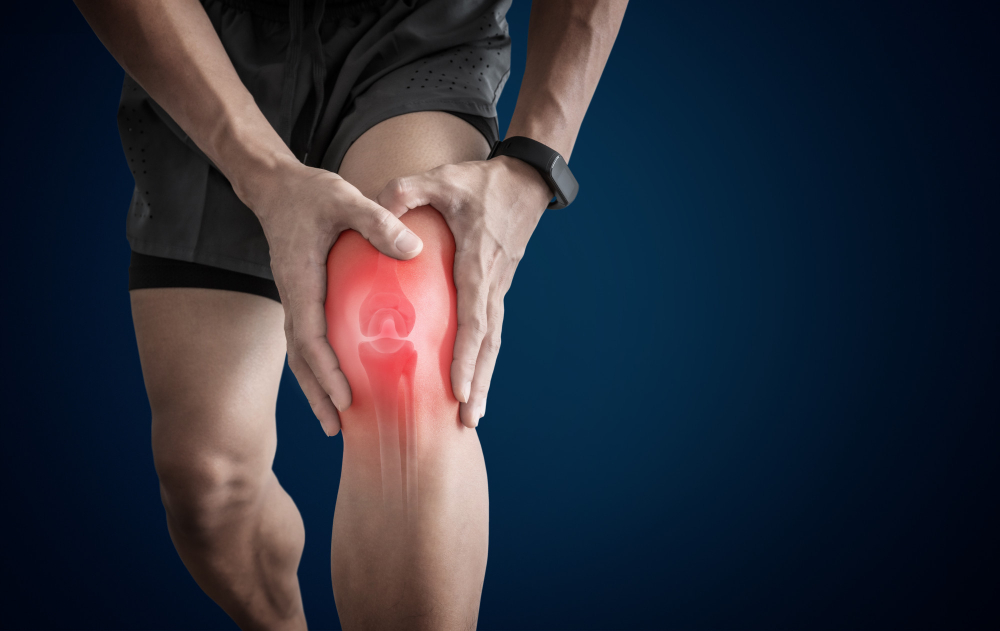
Knee pain is one of the most common joint complaints and can arise from a variety of underlying issues. At our Keller clinic we often identify:
- Overuse or repetitive strain from walking, running, jumping or occupational loads
- Misalignment of the spine, hips or legs that puts extra stress on the knee joint
- Muscle, tendon or ligament injuries (such as meniscus tears, ACL/MCL injuries, patellar tendinitis)
- Cartilage degeneration or arthritis causing joint inflammation and stiffness
- Compensation from other joints (hip, ankle, spine) forcing the knee to absorb excess load
How We Address Knee Pain in Keller, TX
At our Keller‑based practice, we use a comprehensive, non‑surgical approach to relieve knee pain and restore mobility:
Gentle Chiropractic Adjustments: Led by Dr. Dennis James, DC, FASA, our precise alignment work not only addresses the knee itself, but corrects spinal, hip and leg alignment that contribute to knee joint dysfunction.
Soft Tissue & Joint Mobilization: We apply manual therapies to relax tightened muscles, release trigger points, reduce inflammation and improve circulation around the knee.
Lifestyle & Biomechanics Coaching: We help you adjust your movement patterns, posture, ergonomics and daily activities to prevent recurrence of knee pain and protect the joint long term.
What to Expect at Your First Visit
- A detailed consultation with Dr. James to review your knee‑pain history, activity level and goals
- A full physical examination including posture analysis, hip/ankle/spine screening, knee joint assessment and functional testing
- A personalized treatment plan tailored to your specific condition, whether acute injury, chronic wear, or alignment‑related stress
- Ongoing monitoring and care adjustments to ensure pain reduction, improved mobility and a return to your normal activities
Conditions We Treat at Our Keller Clinic
- General knee pain and stiffness
- Knee pain with walking, climbing stairs, squatting or kneeling
- Patellofemoral pain syndrome (“runner’s knee”)
- Meniscus or ligament strain/sprain (when non‑surgical care is appropriate)
- Mild to moderate osteoarthritis of the knee
- Knee pain caused or exacerbated by hip, ankle or spinal alignment issues
Why Choose Performance Chiropractic in Keller, TX?
- Conveniently located at 1135 Keller Parkway, Suite 200, Keller, TX 76248
- Led by Dr. Dennis James, DC, FASA, trusted practitioner with over 20 years of clinical experience
- A holistic approach: we don’t just “treat the knee,” we look at the whole body including spine, hips and movement patterns
- Gentle, modern techniques suitable for adults, teens, active individuals, and athletes
- Serving Keller, Southlake, North Richland Hills, Fort Worth and the wider DFW region
Practical Tips to Support Your Knee Pain Recovery
- Use correct movement mechanics, avoid deep squats or heavy loads if you’re in the early healing phase
- Strengthen your glutes, hamstrings and quad muscles, these support the knee joint and reduce stress
- Keep a healthy body weight to minimize load on the knee joint
- Stay mobile, regular gentle movement helps joint nutrition and circulation
- Wear supportive footwear and replace worn‑out shoes to prevent misalignment
- Communicate any change in symptoms, such as increased swelling, locking, instability or pain with bearing weight
Frequently Asked Questions
Does knee pain always mean I have to have surgery?
Not necessarily. Many cases of knee pain, especially those from alignment issues, overuse or early arthritis, can improve significantly with non‑surgical care including chiropractic, manual therapies and exercise. However, if there’s a major ligament tear, fracture or severe cartilage loss, surgical referral may be required.
If my knee pain comes from my back or hip, won’t treating the knee itself still help?
Treating the knee alone may give short‑term relief, but unless underlying hip, spine or leg alignment issues are addressed, the pain often returns. That’s why we evaluate and treat the full kinetic chain to provide lasting improvement.
How quickly will I see improvement?
It depends on many factors, how long you’ve had the pain, the underlying cause, your activity level and how well you follow the rehab plan. Some patients feel relief within a few sessions; others may need a longer plan to restore full function.
Can I still exercise while I have knee pain?
Yes, often you should, but with modifications. Gentle low‑impact activities like swimming or cycling may be acceptable, while high‑impact or heavy‑load movements may need to be avoided until stabilization and alignment improve.
When should I seek immediate medical attention instead of waiting?
Seek urgent medical assessment if you have: visible deformity, inability to bear weight, sudden swelling (within hours), locking or catching of the knee, significant instability, fever or chills (which may signal infection or inflammatory condition).
